The gate derives its name from the Baths of Septimius Severus, which were located in this part of Trastevere. It is likely that they fell into disuse precisely due to the construction of the Aurelian Walls, which ran through them.
The original form of the gate, built along the axis linking Trastevere with the Vatican, is not known in detail, though it must have been a minor door type. It has been reshaped various times over the course of time. Among these, it is worth mentioning the restoration by Nicholas V in 1451 and the total reconstruction under Alexander VI in 1498, probably to a design by Antonio da Sangallo the Elder.
The current appearance of the gate is the result of the restoration by Pius VI at the end of the 18th century. It consists of a single archway topped by a row of corbels and crowned by an attic storey with slitholes on the exterior façade and swallow-tailed merlons on the interior one. The gateway is faced by a moulded arch on the exterior side and blocks of travertine on the city side; in the jambs it is still possible to see the grooves where a grille was lowered to block passage. The gate was defended by a single tower on the western side, perhaps dating to the Roman age.
On the left of both facades are religious frescoes, albeit greatly deteriorated, depicting the Holy Family (16th century) and the Agony in the Garden (17th century).
During the Middle Ages the street passing through Porta Settimiana became the main route used by pilgrims heading towards Saint Peter’s from the river port near Porta Portuense. The street was mainly flanked by vegetable gardens and vineyards, and it was not refurbished until the time of Pope Julius II (1503–1513), when the neighbourhood was transformed into a residential area and the street was flanked by villas and palaces belonging to rich and aristocratic families such as the Chigi and the Riario.
Around the middle of the 17th century, when the new city walls from Trastevere to Borgo, and including the Janiculum Hill, were built at the behest of Urban VIII, Porta Settimiana lost its defensive function for good, and simply became an arch inside the city.
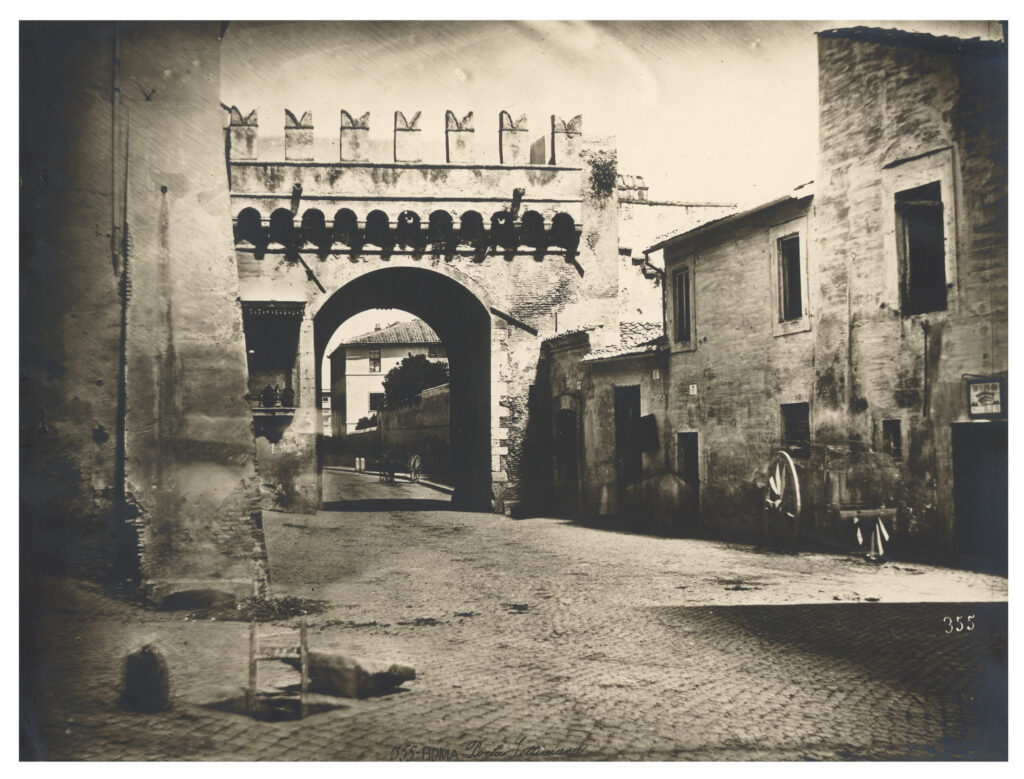
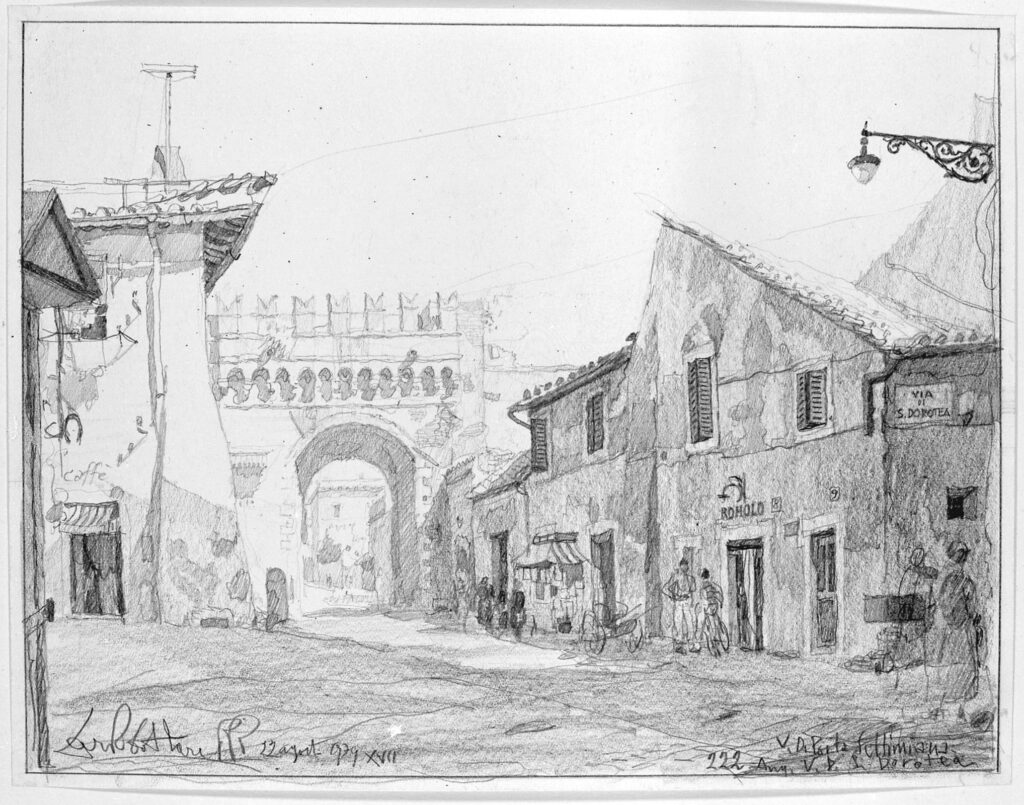
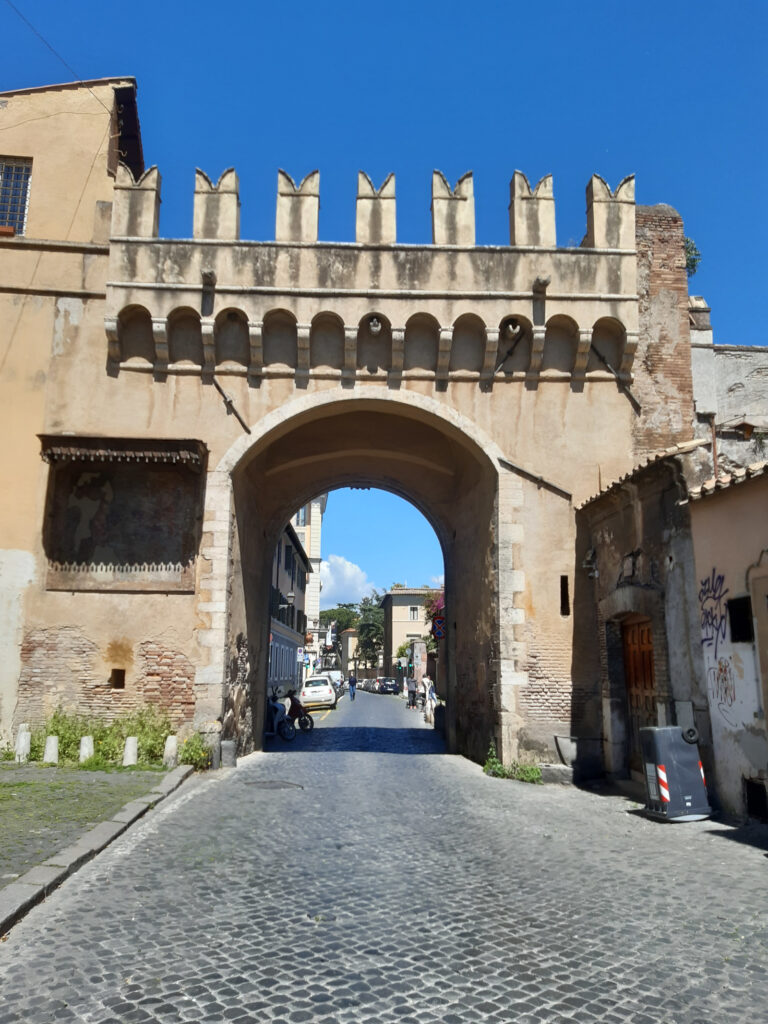
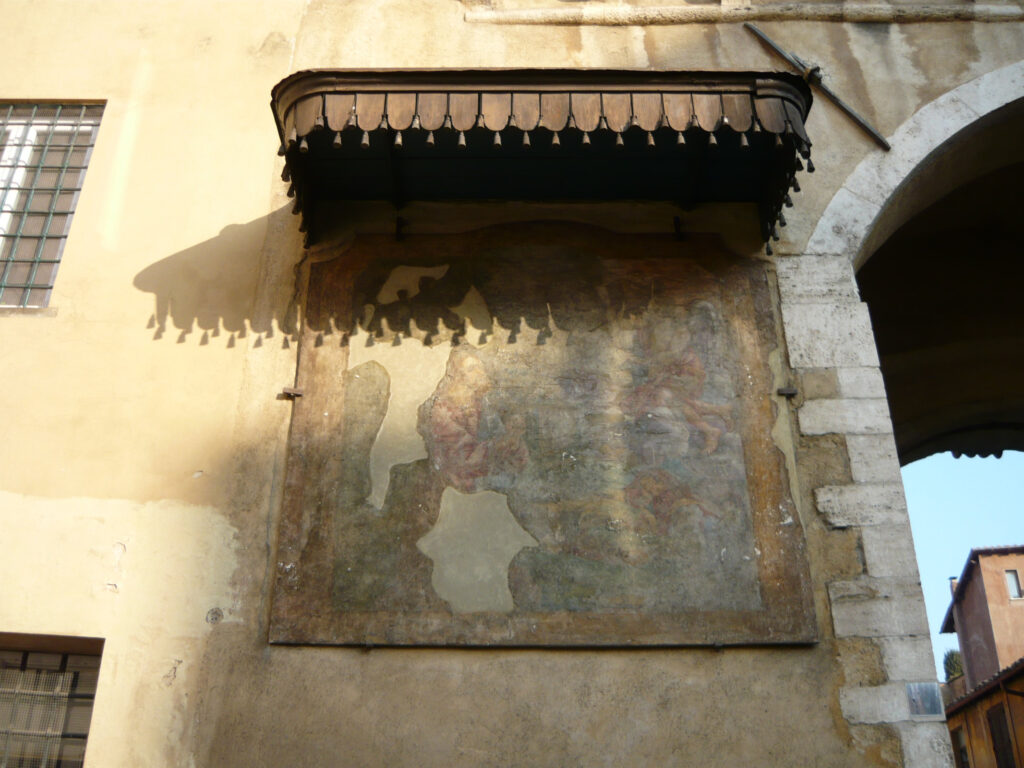
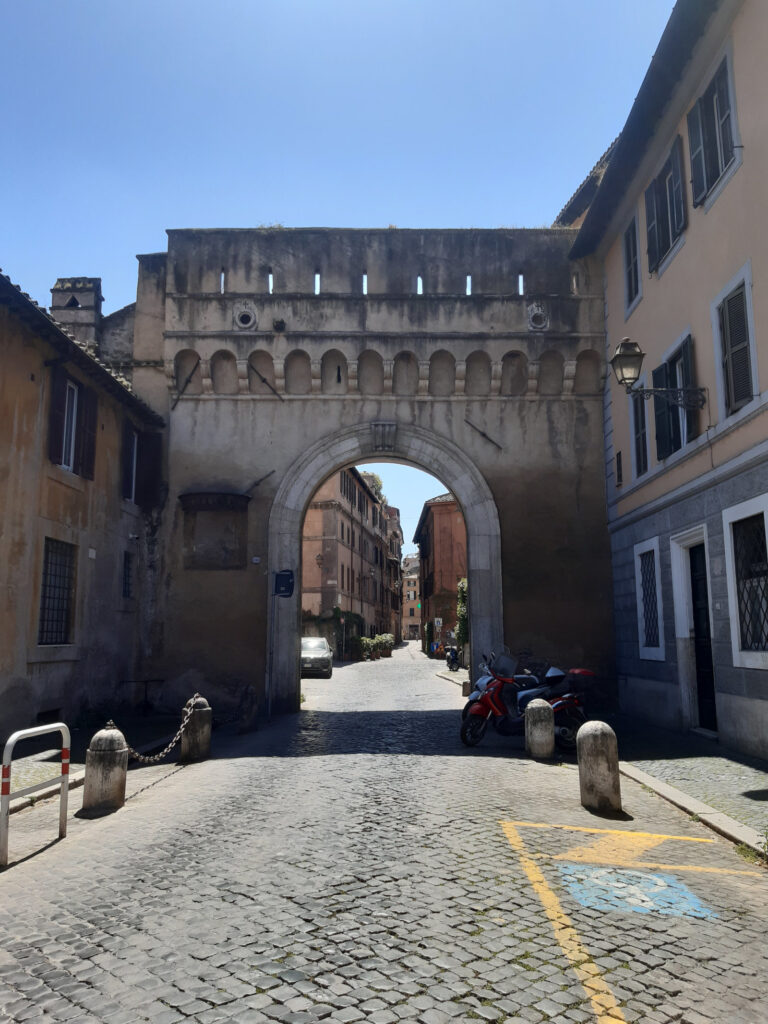
2. C. DOTTARELLI, Via di Porta Settimiana, corner with Via di Santa Dorotea, 1939, pencil on paper.
3. Porta Settimiana, interior view.
4. Porta Settimiana, Agony in the Garden.
5. Porta Settimiana, exterior view.


